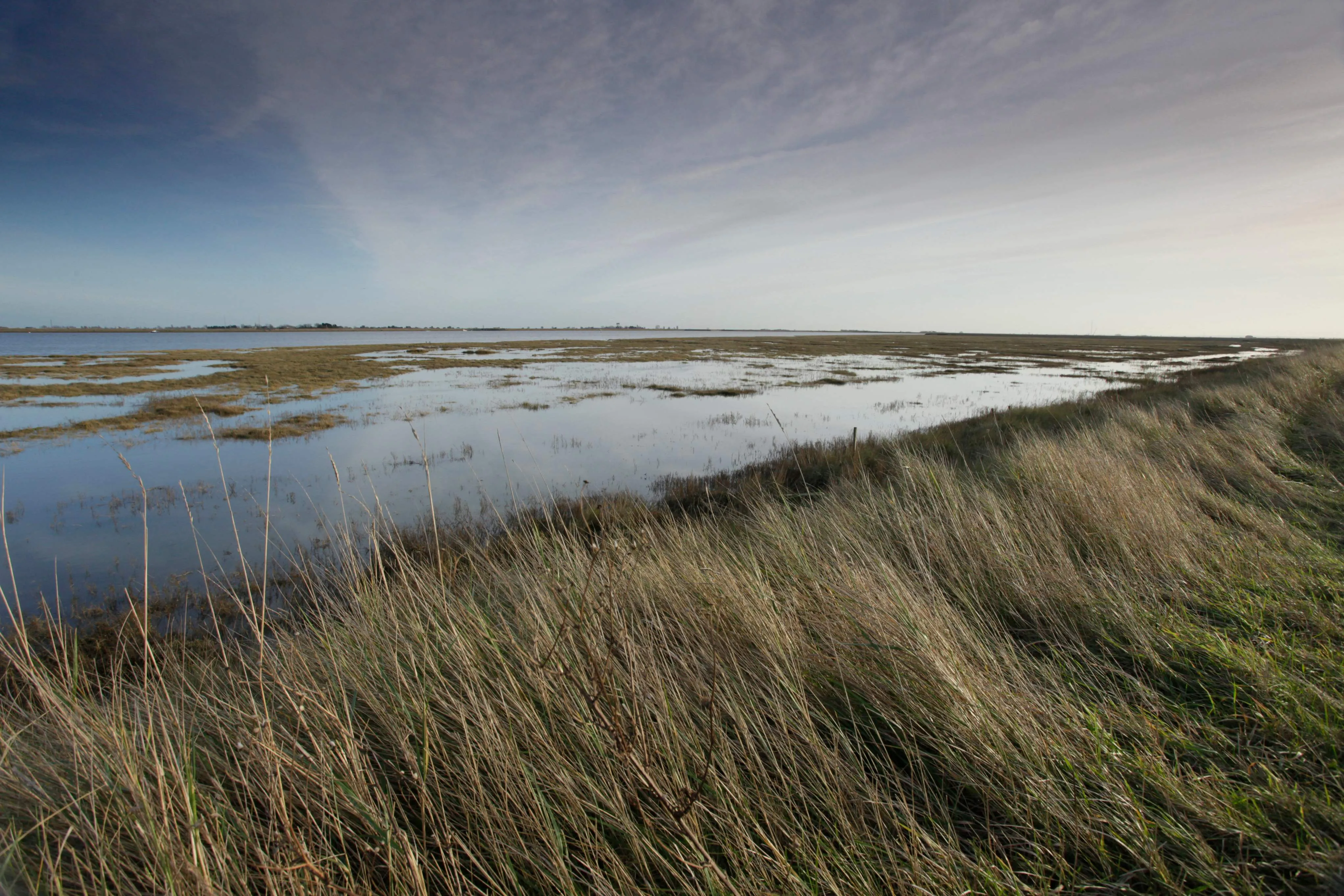News
White-tailed Eagles disappear in suspicious circumstances
We’re offering a £10,000 reward for information that leads to a conviction in these cases.
38,000 waterbirds were recorded at RSPB Wallasea Island during surveys in December 2023, a record number for the reserve.

The highest ever number of waterbirds were recorded at RSPB Wallasea Island in December 2023 during monthly Wetland Bird Surveys, known as WeBS counts. 38,000 birds were recorded, which included species such as Teals, Shovelers and Wigeons. This recent count beat the previous record of 32,770 from January 2020.
This record success comes following the Wallasea Island Wild Coast Project, which saw areas of intertidal mudflats, lagoons and saltmarsh habitat created. The recent December WeBS survey, which involved a total of nine surveyors counting birds across the reserve simultaneously, also recorded the highest ever numbers of individual species, including 700 Avocets and over 2,000 Black-tailed Godwits. These fantastic results are thanks to the creation of over 650ha of lagoons, mudflats, saltmarsh and coastal grassland, between 2015 and 2018, which are now fulfilling their promise of supporting thousands of feeding and roosting waterbirds.

Over half of the birds are found in a 165ha area of the reserve called Jubilee Marsh, a combination of saltmarsh, mudflats, lagoons, islands and grassland. This habitat creation was part of the Wallasea Island Wild Coast Project that saw three million tonnes of soil, from the Crossrail scheme in London (the excavation of a railway tunnel from East to West London for the Elizabeth Line), being used to raise land levels before the sea wall was breached in July 2015.
This scheme allowed the land to naturally flood with tidal water, which caused a mosaic of habitats to be created. These areas provide a rich feeding and safe roosting space for birds, such as Black-tailed Godwits, Knots, Lapwings, Golden Plovers and Grey Plovers, all of which were recorded in large numbers in the recent survey. Waterfowl, including Wigeons and Dark-bellied Brent Geese, are drawn to the area to spend the winter along the Essex coastline, with the lagoons and coastal grazing marsh behind the seawall on the reserve adding extra feeding and roosting sites for these species.

Rachel Fancy, RSPB Site Manager for Wallasea Island, said: “It was wonderful to record 38,000 wetland birds in our December 2023 survey at RSPB Wallasea Island, the highest ever number for the reserve. It’s an exciting sight to see the waders in such large numbers swirl around the marsh and lagoons.
“This really is thanks to the Wild Coast Project creating large-scale habitats on site, which shows that there is hope for restoring nature across England. Projects such as this are especially important right now as the world goes through a nature and climate crisis. Areas of Jubilee Marsh are around one metre above the current high tide level, providing safe roosting space for species as well as a refuge for those displaced from other sites as conditions change. It will be exciting to see what future bird surveys reveal about the reserve, although this record survey already shows how valuable RSPB Wallasea Island is for nature. It also highlights the power of people coming together to help nature, so we’d like to say a huge thank you to our wonderful surveyors who help us count the birds each year.”
Parts of Jubilee Marsh were designed so that they are a metre above the height of the highest tide level currently expected to occur under average conditions. With this RSPB reserve already providing important high tide roosts for birds when much of the nearby intertidal areas are under water at high tide, its value for these birds will only increase as the climate continues to change and sea-levels rise.

Wallasea Island in Essex falls within England’s East Coast Wetlands, which is a globally important place for nature, stretching from the River Thames to the Humber estuary. This diverse network of coastal habitats provides a home to millions of migratory birds each year, including these extraordinary numbers of birds recorded at Wallasea Island. These wetlands along the east coast of England were successfully added to the UK’s Tentative List of World Heritage sites last year.
Thanks to the Wallasea Island Wild Coast Project, 38,000 birds have found a refuge at this RSPB reserve this winter.
